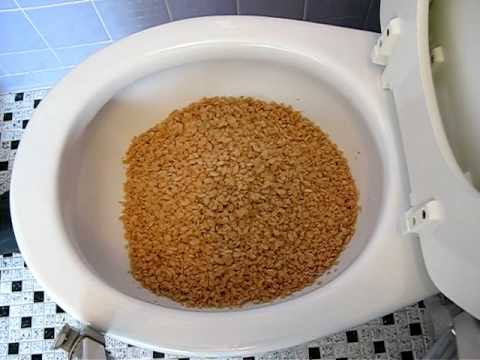Is it Feasible to Dispose of Food Waste in the Toilet?
Is it Feasible to Dispose of Food Waste in the Toilet?
Blog Article
The content further down pertaining to Is it safe to flush food (especially rice) down the toilet? is pretty much enjoyable. Try it and draw your own ideas.

Introduction
Many individuals are usually confronted with the issue of what to do with food waste, particularly when it concerns leftovers or scraps. One common concern that occurs is whether it's alright to purge food down the toilet. In this short article, we'll look into the reasons individuals may take into consideration purging food, the consequences of doing so, and alternative methods for correct disposal.
Reasons why individuals might consider purging food
Absence of awareness
Some individuals might not recognize the prospective damage caused by purging food down the bathroom. They might erroneously believe that it's a harmless practice.
Benefit
Purging food down the toilet might seem like a quick and very easy remedy to taking care of unwanted scraps, especially when there's no neighboring trash can available.
Laziness
In many cases, individuals may simply select to flush food out of large laziness, without taking into consideration the repercussions of their activities.
Consequences of flushing food down the bathroom
Ecological influence
Food waste that winds up in rivers can contribute to contamination and injury water ecological communities. Additionally, the water utilized to flush food can strain water resources.
Plumbing problems
Purging food can cause blocked pipes and drains, triggering expensive pipes repair services and aggravations.
Types of food that need to not be purged
Fibrous foods
Foods with fibrous structures such as celery or corn husks can obtain tangled in pipes and create blockages.
Starchy foods
Starchy foods like pasta and rice can soak up water and swell, leading to blockages in pipelines.
Oils and fats
Greasy foods like bacon or food preparation oils need to never be flushed down the bathroom as they can strengthen and trigger blockages.
Appropriate disposal methods for food waste
Utilizing a garbage disposal
For homes outfitted with waste disposal unit, food scraps can be ground up and flushed with the plumbing system. Nevertheless, not all foods appropriate for disposal in this fashion.
Recycling
Particular food packaging materials can be reused, minimizing waste and lessening environmental impact.
Composting
Composting is an environment-friendly means to dispose of food waste. Organic materials can be composted and made use of to enrich soil for horticulture.
The significance of proper waste management
Reducing environmental harm
Correct waste management techniques, such as composting and recycling, aid reduce pollution and protect natural resources for future generations.
Safeguarding pipes systems
By preventing the method of flushing food down the commode, house owners can prevent costly pipes repair work and preserve the stability of their pipes systems.
Verdict
Finally, while it may be alluring to purge food down the commode for ease, it is essential to understand the possible effects of this activity. By taking on appropriate waste management practices and throwing away food waste responsibly, people can add to much healthier pipes systems and a cleaner setting for all.
FLUSH FOOD DOWN THE TOILET?
FLUSHING FOOD CAN CAUSE BLOCKED DRAINS IN YOUR HOME
All of the plumbing fixtures in your home are connected to the same sewer pipe outside of your home. This outdoor sewer pipe is responsible for transporting all the wastewater from your home to the Council sewer mains. Even small pieces of food that go down the kitchen sink can cause problems for your sewer. It should therefore be obvious that flushing larger bits of food, such as meat, risks a clog in either the toilet itself or the sewer pipes. Flushing greasy food is even more problematic because oil coagulates when it cools, coating the interior lining of your pipes.
THE TOILET IS NOT A BIN
Food isn’t the only thing that people shouldn’t be flushing down the toilet. People use the toilet to dispose of all kinds of things such as tampons, makeup wipes, dental floss, kitty litter and even underwear. Water goes to great lengths to educate residents about the high costs and stress placed on wastewater treatment systems simply from people flushing the wrong stuff down the toilet. It costs taxpayers millions of dollars each year, and homeowners thousands in blocked drain repairs.
FLUSHING FOOD IS A WASTE OF WATER
Flushing food is a waste of our most precious resource - water. In June this year Level 1 water restrictions were introduced to protect water supply from drought conditions. Much of New South Wales continues to be affected by prolonged drought with recent figures revealing up to 97 per cent of the state remains in drought. Depending on whether you have a single or dual flush toilet, every single flush uses between five and 11 litres of water. In the current climate this is a huge amount of water to be wasting on flushing food that should be placed in the bin (or better yet, the compost).
https://www.jabplumbingsolutions.com.au/blog/can-you-flush-food-down-the-toilet

I am just very taken with Flushing Food Down the Toilet? and I'm hoping you enjoyed reading my blog post. Do you know somebody else who is excited about the niche? Please feel free to share it. Thanks for your time. Come back soon.
Click Here! Report this page